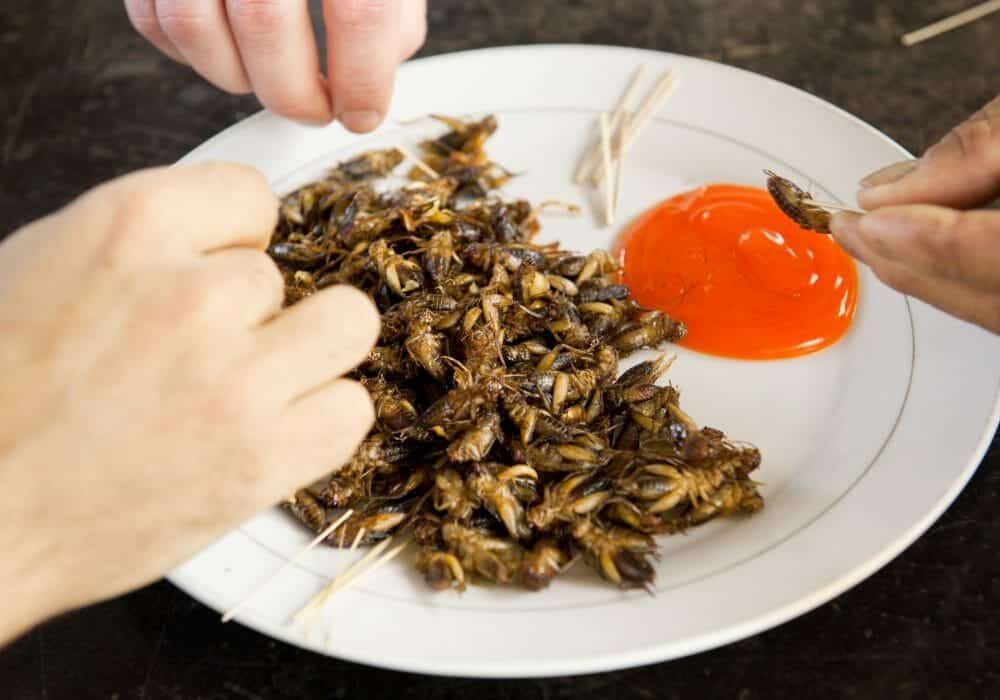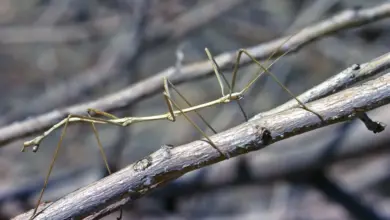Can You Put Crickets In The Fridge?
[modified-date]
[social-share]
For people who own reptiles, amphibians, and other invertebrates, crickets will constantly be on their shopping list. Crickets are very common insects all around the world and they are also very commonly used as ‘feeder insects’.
Supplementing the diets of the nation’s reptilian pets, crickets are easy to keep and have a high nutritious value. But can you put crickets in The Fridge?
In the wild, crickets as well as superworms are a crucial source of proteins and energy for many reptilians, amphibians, and other animals.
In captivity, people have to consider the optimum conditions for their exotic pets and the live food they eat.
Keeping them in opposing environments than they are used to will calm crickets down and make them easier to handle.
Why Crickets?
Crickets are highly nutritious and rich in essential amino acids offering a large amount of protein they are also called feeder crickets.

They also contain B12, Omega-3, and Omega-6 which are all critical for maintaining the pet’s healthy nervous system and brain health.
Large Cricket is particularly healthy and dense in key proteins and vitamins. They have been considered in the human diet as a healthier and more sustainable form of protein.
Crickets are often eaten whole by vertebrates due to this and digested slowly releasing energy and vitamins gradually to the animal.
Dead Cricket is often eaten whole by vertebrates. They are digested slowly, gradually releasing energy and vitamins into the animal.
Did you Know?
Crickets are invertebrates and have an exoskeleton instead of an internal one. Although it may not seem like it, a cricket’s tough exoskeleton is easier for predator species to digest compared to an internal skeleton.
Why Should You Put Them In The Fridge?
Crickets are fed to the same predators kept in captivity as they would encounter in nature. This helps activate the natural reflexes and behaviors of the predator.
Feeding crickets live also stimulates the captive animal, keeping them entertained.
Crickets have quick reflexes and move very quickly, they are hard to keep control of. Like other animals, when they get cold their reaction times and reflexes slow down.
So, putting them in the fridge for periods slows them down and makes them easier to handle and feed to your pets.
How Long Can Crickets Be In The Fridge?
Putting crickets in the freezer for up to 5 minutes will calm them down, compared to their room-temperature energy levels. Why is this though?
Different subspecies of crickets are mesophiles and thermophiles. This means they either thrive at moderate room temperatures or higher temperatures of up to 45 degrees Celsius.
Crickets are ‘freeze-avoiding’ insects and are consequently negatively affected by cold environments.
If they are put into colder environments, like a fridge, their metabolism slows and so their energy release is reduced. This subsequently makes them look asleep or half dead and a lot easier to handle.
Once they are put in with a pet who lives either at room temperature or has a heat lamp, they soon warm back up and start hopping around again.

How Should Live Crickets Be Stored?
Let’s be clear, crickets should not be kept in a refrigerator for long periods.
Depending on the number of live crickets you require, you can store them in smaller containers such as egg crates or cricket containers or you can purchase cricket stores for larger quantities.
Crickets cannot climb up smooth surfaces so if you have a high-walled container a lid isn’t always necessary. However, lids are recommended for peace of mind. If a lid is used, the container must be well-ventilated.
Banded crickets are regularly used as live feeder insects and are said to live optimally at around 23 degrees Celsius. Crickets also like to live in dry environments, they should be kept away from direct sunlight with reduced humidity.
It’s also important to consider what you feed your crickets and how that will affect the animals that eat them. Gut loading is when crickets are fed an optimum, nutrient-dense diet. What they eat then transcends into the predator that eats it.
Conclusion
Crickets are a valued and highly nutritious feed for live reptiles and amphibians in captivity.
Although they are fed alive, putting them in the fridge allows the handler to transport them from container to container easily.
When the crickets are placed in a cold environment, such as a fridge, their metabolism slows. They will use less energy and go into a sleep-induced state.
References:
- “Edible crickets (Orthoptera) around the world: distribution, nutritional value, and other benefits—a review”. Magara, H.J., Niassy, S., Ayieko, M.A., Mukundamago, M., Egonyu, J.P., Tanga, C.M., Kimathi, E.K., Ongere, J.O., Fiaboe, K.K., Hugel, S. and Orinda, M.A. 2021. Frontiers in nutrition.
- “Nutritional value, protein and peptide composition of edible cricket powders”. Montowska, M., Kowalczewski, P.Ł., Rybicka, I. and Fornal, E. 2019. Food chemistry.
- “From blackbirds and thrushes… to the gut-loaded cricket: a new approach to zoo animal nutrition”. Allen, M.E. 1997. British journal of nutrition.
- “Which Insect Species and Why?” Bjone, H. and Fitches, E.C. 2021.University of Durham.
- “Diverse adaptations in insects: A review”. Sheikh, A.A., Rehman, N.Z. and Kumar, R. 2017. Journal of Entomology and Zoology Studies.
- “Low-temperature biology of insects”. Denlinger, D.L. and Lee Jr, R.E. 2010. Cambridge University Press.
- “Raising crickets for bait”. Swingle, H.S.1961.
- “Modern insect-based food industry: current status, insect processing technology, and recommendations moving forward”. Dossey, A.T., Tatum, J.T. and McGill, W.L. 2016. Insects as sustainable food ingredients. Academic Press.
- “Effects of a high calcium diet on gut loading in varying ages of crickets (Acheta domestica) and mealworms (Tenebrio molitor)”. Hunt, A.S., Ward, A.M. and Ferguson, G. 2001. In Proceedings of the 4th conference on zoo and wildlife nutrition, Lake Buena Vista.
Founder of Re-Educating Earthlings environmental education platform | Children’s Author | Freelance environmental writer | ‘No one can do everything, but, someone can do something’. LinkedIn Profile.
Disclaimer
Earthlife.net does not provide medical advice. We do our best to help users understand the science behind living beings; however, the content in the articles and on the website is not intended to substitute for consultation with a qualified expert. By interacting with the website and/or our email service, you agree to our disclaimer. Remember that you must consult a specialist before using any of the products or advice on the web.





